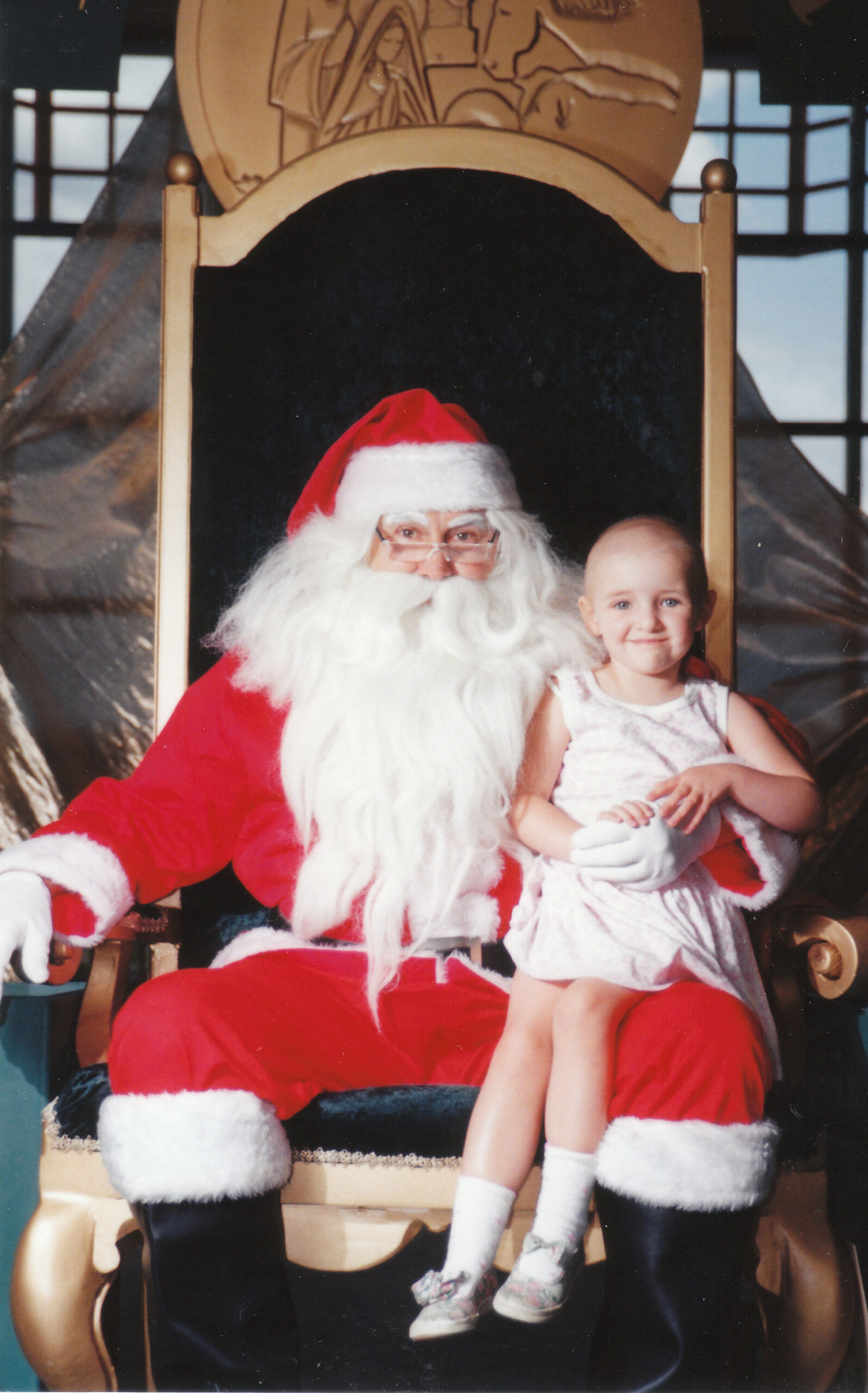Early signs of Leukemia in a child can be recognised by a number of factors. Leukemia is a kind of cancer of the blood and it can occur in children as well as adults. While still relatively rare, leukemia is the most common cancer among children. My daughter was only 3 and 3 quarters years of age when she got sick with Acute Lymphoblastic Leukemia – ALL. Recognising the early signs of leukemia in children is crucial for early diagnosis and treatment, as prompt intervention can significantly improve the prognosis. In this article, we will discuss these first signs in an effort to help parents and caregivers understand that it is a possibility and go to a doctor for blood tests if they notice any concerning symptoms. Pre-warned is pre-armed and my aim is to help people recognise if they should seek medical attention or not.

I Missed My Early Warning System
There are at least 8 symptoms that could be a warning your child has Leukemia. In our case, because I had no idea what Leukemia was or how it was represented in symptoms, I missed the boat in terms of figuring out that my daughter was actually very sick. Friends who hadn’t seen my daughter in a while, noticed she looked pale. But because she lived with me all the time, I couldn’t see it until it had become quite drastic. Things I noticed but didn’t realise until later that were also an indication of Leukemia, were that she had a huge black bruise on her leg and when I questioned her about how she got it, she had no recollection. This seemed odd because how could she not remember hurting herself so bad that a big black bruise had surfaced? When I asked at her Kindy, no one seemed to know anything about her being injured. One thing to note was that the bruise, as nasty and angry as it looked, did not hurt her if it got touched. Nowadays, even as a 35 year old adult, I still poke her bruises to see if they hurt or not. It was one of my ways that I used to tell if her platelets were low. Another indication of low platelets is bleeding gums, which my daughter also experienced and I didn’t realise and just thought she had brushed her teeth a bit too hard.
She also had started to come home from Kindy and fall asleep on the couch, which I had initially put down to her having a big day at Kindy, but never expected that it was because of Leukemia. She also had extreme emotional reactions that were instantaneous and then changed suddenly to something else. One minute she was sobbing her little heart out over something, and the next she was laughing almost maniacally, I thought to myself, what is happening to my daughter, has she gone a bit crazy? The deciding factor was a recurring infection, in her case, tonsilitis, which the first doctor I went too with her just kept changing her antibiotics. If I hadn’t decided to find a different doctor because I was concerned that many antibiotics might be harmful, my daughter might have died. I took her, he ordered a blood test, and the rest is history and the beginning of a long, intensive treatment regime. All of these little things that didn’t seem like much, added up to a big thing.
8 Symptoms to Watch Out For
Now for a rundown of those 8 symptoms to be aware of. None of these would stand out on their own as anything that unusual, let alone a medical emergency, but when you put them all together, it may be significant and worth getting checked over.
Unexplained Fatigue and Weakness
One of the most common early signs of leukemia in children is persistent fatigue and weakness. While it’s natural for kids to feel tired from time to time, leukemia-related fatigue tends to be extreme and doesn’t improve with rest. Children with leukemia often become lethargic, lose interest in their usual activities, and may experience a decrease in physical stamina. Looking back on my daughter’s illness, this would definitely explain what she experienced when she was falling asleep. She was just so young, at not quite 4 years old, that she wouldn’t have even known how to tell me she was tired, or even know herself that she was.
Frequent Infections
Leukemia can weaken the immune system, making children more susceptible to infections. Parents should be concerned if their child experiences recurrent or severe infections, such as frequent colds, flu, or unexplained fevers. These infections may be a sign that the body’s ability to fight off illnesses is compromised. In our case, this was represented in her recurring tonsilitis where she didn’t seem to be getting better and just kept getting put on different antibiotics. It’s hard not to blame that first doctor because if I hadn’t taken my daughter to a different doctor because I wasn’t happy with his assessment of the situation, we may not have caught the Leukemia early enough and lost our window of opportunity to be treated successfully. This misdiagnosis could have killed my daughter. Even though she was pale by then, had the other symptoms and the recurring tonsilitis, never in a million years would Leukemia have ever crossed my mind. It was a huge shock to hear the news of the diagnosis, and an even bigger shock for what was to come in terms of treatment and how our lives would change.
Easy Bruising and Bleeding
Children with leukemia may develop easy bruising or bleeding, even from minor injuries. This is because leukemia disrupts the production of healthy blood cells, including platelets responsible for clotting. Parents should be watchful for unexplained bruises, nosebleeds, gum bleeding, or excessive bleeding after minor cuts or scrapes. Once again, my daughter had gums that had bled and that massive bruise that no one could explain how she got it, not even her. So far we have ticked all of the boxes for having Leukemia, yet none of these seemed out of the ordinary at the time.
Pale Skin Which Could be a Contributing Factor to the Fatigue Too
Leukemia can lead to anemia, which reduces the number of red blood cells and causes symptoms such as pale skin, weakness, and dizziness. Red blood cells have iron in them, which is what carries the oxygen around in your body. When red blood cells are low it means the body is being depleted of oxygen in the cells very quickly. Oxygen is needed to produce energy so when the iron is low and the oxygen is low, energy will be low as well. Parents may notice that their child appears unusually pale or complains of feeling lightheaded or dizzy, especially after physical activity. The normal pinkish colour of the skin is due to the red blood cells being fully oxygenated under normal circumstances, but will become pale when red blood cells are low. It can be seen when looking at the lines on the palm of the hand. Normally these lines are red, but when the lines have become white, it’s a sure sign your child’s red blood cells are low. This was why my daughter was becoming noticeably paler, because her red blood cells were being overcrowded and destroyed by the immature, malfunctioning white blood cells, which is basically what Leukemia is.

Enlarged Lymph Nodes
Lymph nodes are part of the body’s immune system and can become enlarged in response to infections or diseases like leukemia. Parents should be attentive to any swelling of lymph nodes, particularly in the neck, underarms, or groin, that persists for several weeks without a clear cause. I don’t recall if my daughter experienced this, but it was highly likely she did and it was just expected by the oncologist who never thought to tell me.
Bone and Joint Pain
Leukemia can cause bone and joint pain, especially in the legs. Children may complain of pain, tenderness, or discomfort in their bones and joints. This pain is often more noticeable during the night and can sometimes be mistaken for growing pains. I did notice during treatment in particular my daughter struggled with this. She had no words to describe exactly what she was feeling except that she felt “yucky”. I used to have to push her around in her stroller a lot because she was weak and in pain.

Loss of Appetite and Weight Loss
A sudden loss of appetite and unintended weight loss are concerning signs in children. Leukemia can affect the digestive system and cause a decreased interest in food. Parents should be cautious if their child experiences a significant decline in their eating habits and loses weight without any obvious reason. I think we caught my daughter’s Leukemia before we had much of this occur. She did lose her appetite during treatment from memory, but there were times anyway that she didn’t feel like eating if she was tired etc., so it didn’t seem out of the ordinary. She didn’t have any weight loss at this stage of her illness.
Swelling of the Abdomen
Leukemia can cause the spleen or liver to enlarge, leading to abdominal swelling or discomfort. Parents should seek medical attention if they notice an unexplained enlargement of their child’s abdomen. Another thing to take note of, because you are not likely to notice an enlarged spleen if you are not looking for it, is that your child might complain that clothing is too tight and drop the waist bands below the area to rest more comfortably for them which is another indicator that they have discomfort from an enlarged spleen or liver. My daughter definitely had issues with wearing anything tight across her waist and still to this day, hates wearing clothing that has high waist bands.
Diagnosis
If a child exhibits any of the above symptoms or if there is a strong suspicion of leukemia, a healthcare provider will conduct a thorough evaluation. The diagnosis of childhood leukemia typically involves the following steps:
- Medical History and Physical Examination: The healthcare provider will ask about the child’s medical history and perform a physical examination to assess symptoms and signs.
- Blood Tests: Blood tests are crucial in diagnosing leukemia. Abnormalities in blood cell counts, such as a high number of white blood cells or low levels of red blood cells and platelets, can raise suspicion.
- Bone Marrow Aspiration and Biopsy: To confirm the diagnosis and determine the specific type of leukemia, a bone marrow aspiration and biopsy are often necessary. These procedures involve taking a sample of bone marrow from the hipbone and examining it under a microscope. Some hospitals will do this under general anesthetic.
- Imaging Studies: In some cases, imaging studies like X-rays, ultrasound, or CT scans may be conducted to evaluate the extent of the disease and check for organ involvement.
In Finishing
Recognising the early signs of leukemia in a child is essential for early diagnosis and treatment. While these signs and symptoms may not always indicate leukemia, they should not be ignored. If parents or caregivers observe any of these warning signs in a child, it is crucial to consult a healthcare professional promptly. Early detection and appropriate medical care can greatly improve the chances of successful treatment and a positive outcome for children diagnosed with leukemia. We were lucky enough to have caught it before it had taken over too much and as you can see we displayed many of the symptoms. I’m not sure if that helps the chances of survival seems the prognosis for survival was still the same regardless of this, but I’d like to think that we got it early enough due to my concerns about the recurring tonsilitis. If in doubt, get it checked out.
I hope this article has been of some help for those of you having concerns at the moment. You can drop me a comment below or get in touch via my dedicated Facebook page if you have any questions.
Warm Wishes and best of luck
Ange



